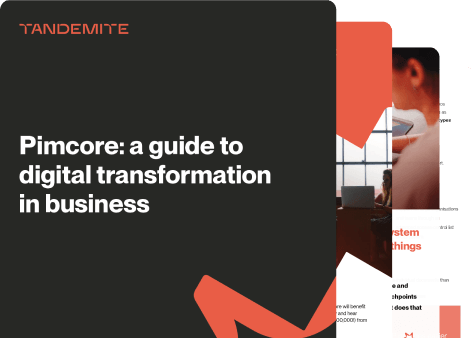Omnichannel is more than just a buzzword; it represents a fundamental shift in how businesses connect with their customers. If you want to be ahead of your competition, better put attention to it.
It is the seamless approach to the consumer experience through all available shopping channels – be it mobile apps, websites, social platforms, or even physical stores. It's about delivering a consistent, integrated, and cohesive customer experience, regardless of how or where a customer reaches out.
But how can businesses ensure this seamless integration across numerous platforms and touchpoints?
Enter "headless technology". In essence, headless technology decouples the user interface (what the customer interacts with) from the backend processes (where all the data and business logic reside).
This decoupling ensures businesses can swiftly adapt, modify, and deploy across various channels without the constraints of traditional systems. It's the powerhouse behind the scenes that makes true omnichannel success possible.
Deciphering 'Headless': From Buzzword to Business Essential
In the world of digital architecture, "headless" might sound unconventional, but its significance cannot be understated. Picture a traditional website system as a train, where the engine and the carriages are inseparable.
Changing a part often requires tweaking the entire system. Headless, on the other hand, is like having a versatile engine (backend) that can quickly connect to different carriages (frontends) as needed. This means businesses can redesign, pivot, or adapt without overhauling the entire train.

As businesses grapple with the challenges of offering a seamless experience across a multitude of platforms, headless technology emerges as the cornerstone of modern digital strategy. Let's delve deeper into how headless systems are revolutionizing omnichannel approaches.
Adaptability Across Channels. The Headless Advantage
The digital landscape is vast and varied, encompassing everything from mobile apps and websites to voice assistants and wearables.
A conventional system that ties the frontend and backend together often struggles to maintain uniformity across these diverse platforms. Headless technology breaks this mold.
- Flexibility by Design. By detaching the presentation layer from the business logic, companies can design unique interfaces for each platform while maintaining a consistent backend.
- Rapid Channel Integration. Want to introduce a new smartwatch app or integrate with emerging IoT devices? With headless, these become plug-and-play scenarios, drastically reducing go-to-market time.
Speed and Efficiency. Setting the Digital Pace
On the Internet, speed isn't just an advantage; it's a necessity. Businesses can't afford prolonged downtimes or extended deployment phases. Users simply hate to wait, and they quit websites that aren’t fast. Both on mobile and desktop.
Here's how headless accelerates digital endeavors:
- Streamlined Updates. Modifying the user interface or adding functionalities doesn't require a complete system overhaul. This decoupled approach ensures that updates are swift, reducing time and resource expenditure.
- Parallel Development. Frontend and backend teams can work simultaneously, without waiting on each other. This concurrent development model further reduces project timelines.
Consistency in Branding and User Experience. A Unified Digital Front
Inconsistent branding or varied user experiences across platforms can erode trust and confuse users. At some point, they can just decide not to use your services or products anymore. Yes. It’s so important! Headless technology stands as a guardian of brand consistency:
- Centralized Content Management. All content – be it text, images, or multimedia – resides in a centralized repository. This ensures uniform content delivery, whether it's showcased on a website, mobile app, or any other platform.
- Uniform Functionality. With a common backend driving diverse frontends, businesses ensure that functionalities, services, and offerings remain consistent. For instance, a promotional offer or loyalty program will be uniformly represented and functionally consistent across all touchpoints.
Personalization and Customization. Headless's Secret Weapons
The distinction between ordinary and exceptional user experiences often boils down to personalization and customization. Headless technology, especially when integrated with modern AI and machine learning tools, offers unprecedented capabilities in this realm.
The seamless integration of AI with headless systems ensures a dynamic content delivery system. It can analyze user behaviors and preferences in real-time, curating a tailored content journey for each visitor.
Imagine a system that knows the content your users prefer and predicts what they'll want next, presenting it across various platforms uniformly.
This level of detail creates highly personalized customer experiences, setting businesses apart in a crowded digital space.
The Economic Impact: Cost Savings and ROI with Headless Solutions
Every business decision, especially those related to technology adoption, inevitably circles back to the financial implications. The use of headless technology yields various economic benefits.
Adopting a headless architecture can lead to substantial cost savings, particularly in areas of development, maintenance, and deployment. By decoupling the frontend and backend, companies can sidestep the traditionally expensive and time-consuming overhauls of integrated systems.
This means quicker deployments and fewer resources spent on system-wide updates.
Furthermore, the return on investment (ROI) with headless solutions is compelling. Beyond the immediate cost savings, businesses can expect improved user engagement, reduced bounce rates, and higher conversion ratios – all of which contribute to a robust and tangible ROI.
The Future is Now. Why Should Businesses Consider Going Headless?
As technologies evolve and user behaviors shift, businesses must remain agile, ready to adapt to the next wave of digital innovation. This is where the headless system shines as a forward-looking choice.
With its modular and decoupled architecture, headless systems are inherently future-proof. As new interaction mediums – like augmented reality platforms or advanced wearables – become mainstream, businesses with headless architectures can seamlessly integrate these channels without the need for extensive overhauls.
Moreover, as we look to future trends, the demand for rapid content deployment, cross-platform consistency, and high levels of customization will only intensify. Headless technology is poised to cater to these emerging needs, solidifying its position as a go-to choice for businesses gearing up for the future.
Did we convince you? Do you have any questions? Contact us and learn what headless can do for you!







